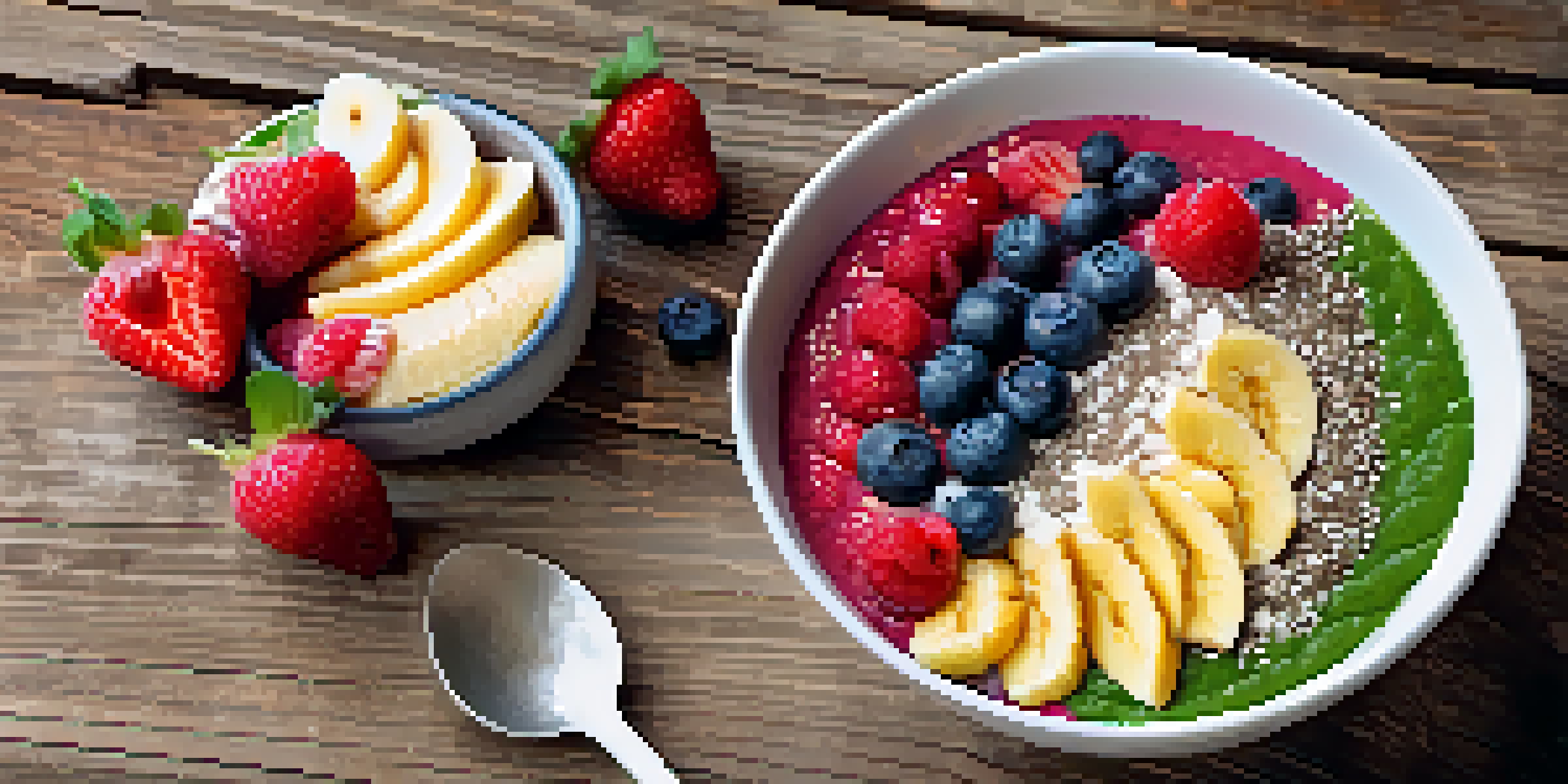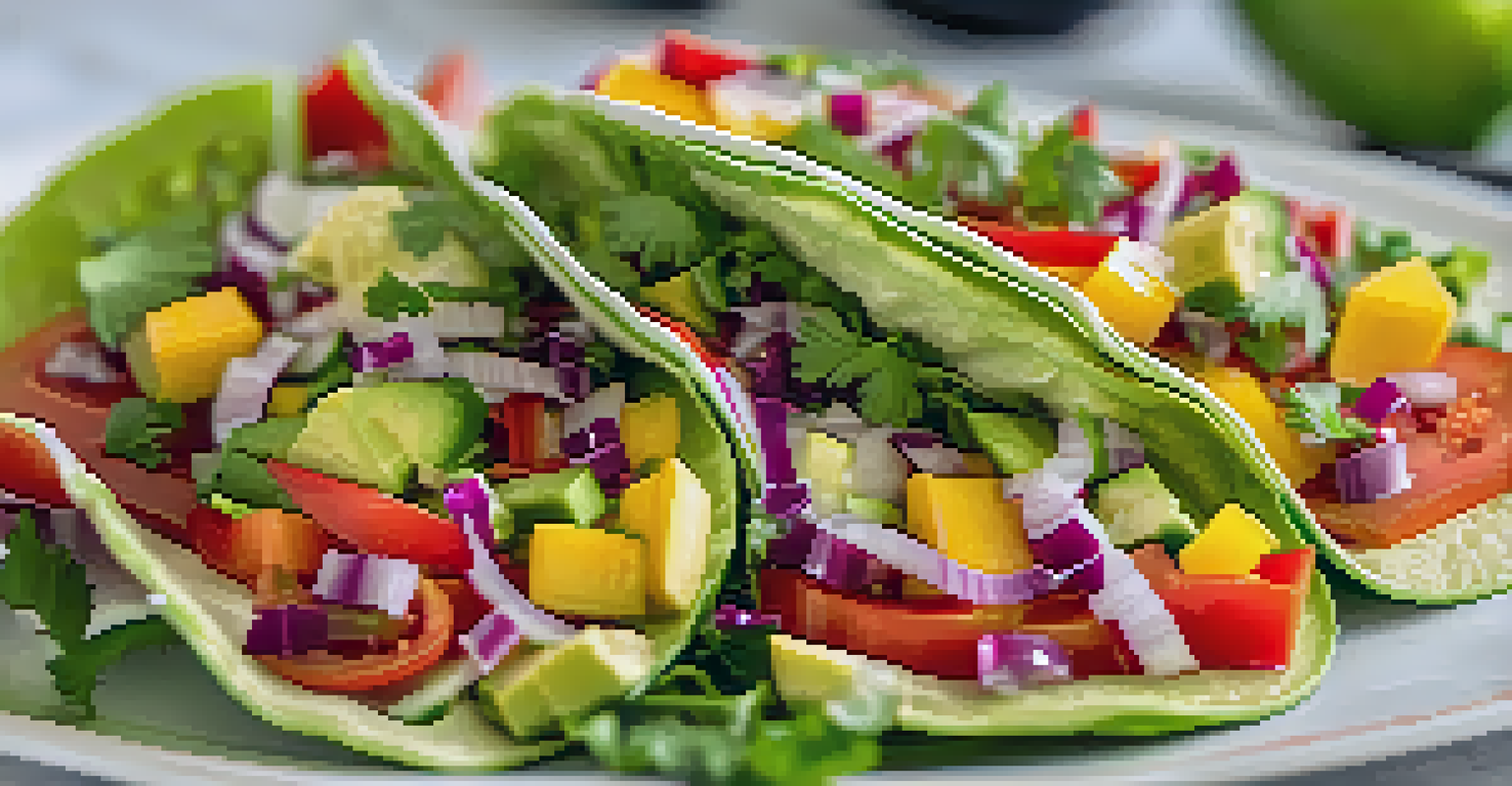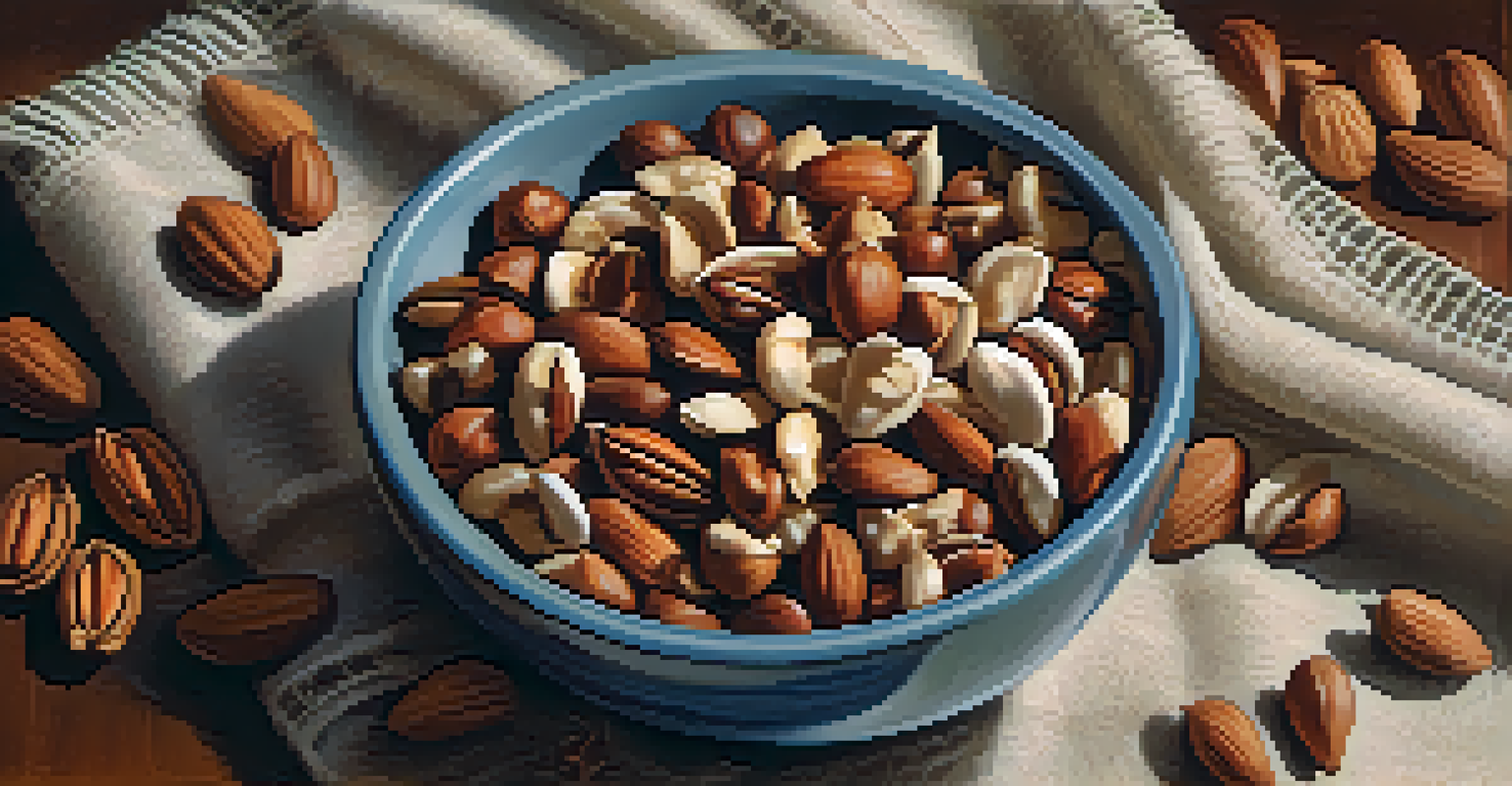Raw Food Recipes: Creative Uses and Cooking Alternatives

Understanding Raw Food: A Fresh Perspective
The raw food diet emphasizes unprocessed and uncooked foods, primarily fruits, vegetables, nuts, and seeds. This approach is not just about eating raw; it’s about embracing the vitality and nutrients that cooking can sometimes diminish. Many people are drawn to raw food for its health benefits, including increased energy and improved digestion.
Let food be thy medicine and medicine be thy food.
Imagine biting into a fresh apple versus a baked one; the raw version retains all its natural enzymes and vibrant flavors. This diet encourages creativity in the kitchen, as you learn to combine various ingredients in ways that elevate their natural taste. Understanding the philosophy behind raw foods can transform your cooking habits and overall well-being.
Moreover, adopting a raw food lifestyle can lead to more mindful eating practices. By focusing on whole, unprocessed ingredients, you become more aware of what you put into your body. This awareness fosters a deeper connection with food, encouraging you to appreciate its flavors and textures.
Creative Raw Food Recipes for Every Meal
Creating meals with raw ingredients can be both fun and delicious. For breakfast, consider a smoothie bowl made with frozen bananas, spinach, and almond milk, topped with fresh berries and seeds. This not only gives you a nutrient-packed start to your day but also keeps things exciting with different toppings.

For lunch, a vibrant salad with spiralized zucchini, cherry tomatoes, and a zesty lemon-tahini dressing can be a game changer. The raw vegetables maintain their crunch and flavor, making each bite a refreshing experience. You can also add nuts or seeds for some protein and healthy fats.
Raw Foods Boost Health and Energy
Incorporating raw foods into your diet can lead to increased energy levels, improved digestion, and enhanced skin health.
Dinner can be equally inventive, with dishes like raw veggie tacos using lettuce leaves instead of tortillas. Fill them with a mixture of diced bell peppers, avocado, and a hint of lime juice for a zesty finish. These recipes showcase how raw foods can be satisfying and full of flavor, proving that you don’t have to cook to enjoy a hearty meal.
Snack Smart: Easy Raw Food Snacks to Make
Snacking doesn’t have to be boring, especially when you have a plethora of raw options available. One simple yet satisfying snack is a mix of raw nuts and seeds, perhaps tossed with a sprinkle of sea salt or spices for flavor. This combination provides healthy fats and protein to keep you energized throughout the day.
The food you eat can be either the safest and most powerful form of medicine or the slowest form of poison.
Another quick snack idea is raw veggies with a homemade guacamole. Simply mash ripe avocados with lime juice, garlic, and salt, then dip in carrot sticks or cucumber slices. This not only satisfies your cravings but also adds a nutritious punch.
For a sweet treat, consider making raw energy balls using dates, nuts, and cocoa powder. Blend these ingredients together, roll them into bite-sized balls, and refrigerate. They provide a quick energy boost without the guilt of processed sugars.
Exploring Raw Food Cooking Techniques
While the raw food diet focuses on unprocessed ingredients, there are various techniques that can enhance flavors without cooking. Dehydrating, for example, is a popular method that removes moisture while preserving nutrients, allowing you to create crunchy snacks like kale chips or fruit leather.
Another technique is marinating, where you soak vegetables in a mixture of oils, acids, and spices. This not only infuses them with flavor but can also soften their texture, making them more palatable. Think of marinated mushrooms or zucchini – they can be delicious additions to salads and wraps.
Creative Raw Recipes for Every Meal
From smoothie bowls to raw veggie tacos, there are countless delicious and inventive ways to enjoy raw ingredients in your meals.
Blending is another technique that can transform raw ingredients into creamy soups or smoothies. A high-speed blender can create a velvety consistency, making it easy to enjoy your favorite flavors without heating them. These methods showcase the versatility of raw foods and how they can be prepared in exciting ways.
The Benefits of Incorporating Raw Foods into Your Diet
Adding raw foods to your diet comes with a range of health benefits. Many people report increased energy levels, improved digestion, and even better skin health after incorporating more raw fruits and vegetables into their meals. The high fiber content in raw foods also aids digestion and promotes a sense of fullness.
Moreover, raw foods are often rich in vitamins and minerals, which can be lost during cooking. For example, vitamin C is abundant in raw fruits and vegetables, and cooking can significantly reduce its levels. By consuming these foods in their natural state, you maximize their nutrient intake.
Incorporating more raw foods can also encourage a more diverse diet. With so many fruits and vegetables to choose from, you’ll naturally experiment with new flavors and textures. This variety not only keeps meals interesting but also exposes you to a broader range of nutrients.
Common Misconceptions About Raw Food Diets
Despite its growing popularity, the raw food diet is often surrounded by misconceptions. One common myth is that it’s difficult to maintain or too restrictive. In reality, a raw food diet offers an abundance of choices and can be adapted to fit various tastes and preferences.
Another misconception is that raw diets lack protein. However, there are plenty of raw sources of protein, such as nuts, seeds, and legumes, which can easily be incorporated into meals. With a bit of creativity, you can ensure you're meeting your protein needs while enjoying delicious raw dishes.
Transitioning to Raw Foods Made Easy
Gradually adding raw fruits and vegetables to your diet can make the transition to a raw food lifestyle smoother and more enjoyable.
Lastly, some believe that raw foods are not suitable for everyone, especially in colder climates. While it can be challenging to consume only raw foods in winter, a balanced approach allows for cooked meals alongside raw options. This flexibility makes it easier to enjoy the benefits of raw foods without feeling restricted.
Tips for Transitioning to a Raw Food Lifestyle
If you’re considering transitioning to a raw food lifestyle, start gradually. Begin by incorporating more raw fruits and vegetables into your current meals rather than overhauling your diet overnight. This approach makes the transition smoother and less overwhelming, allowing your taste buds to adjust.
Experiment with different recipes and techniques to discover what you enjoy most. Perhaps you’ll love making raw desserts or trying out various salads. The key is to find what excites you and keeps you engaged in your raw food journey.

Lastly, connect with others who share your interest in raw foods. Joining online communities or local groups can provide support, inspiration, and new ideas. Sharing experiences and recipes with like-minded individuals can make your transition enjoyable and fulfilling.